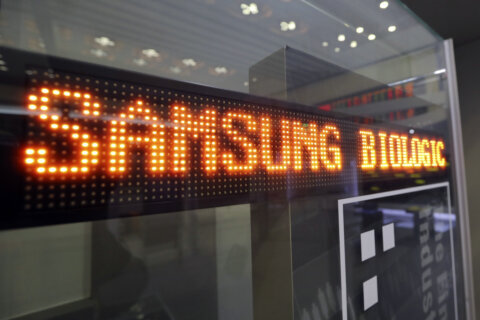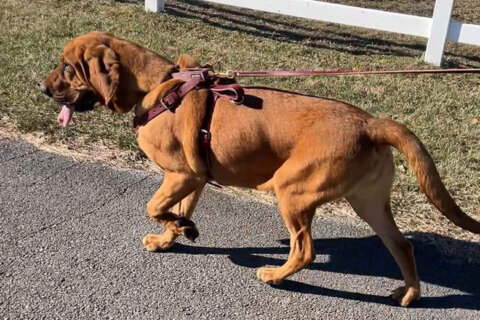SILVER SPRING, Md. — At the first annual Greenfest in Silver Spring, Montgomery County’s top transportation leader wanted to dispel the notion that his agency is pro-car, anti-transit and anti-pedestrian.
Acting Director Al Roshdieh points to the Corridor Cities Transitway, the bus rapid transit network, greener Montgomery County RideOn buses, and efforts to improve bus and pedestrian access as examples.
The transitway is a two-phase project that will begin with building bus-only lanes from the Shady Grove Metro Station to the Metropolitan Grove MARC station. Eventually, a second line would include bus-only lanes connecting Metropolitan Grove MARC to COMSAT in Clarksburg.
In both projects, the bus-only lanes would be dedicated and separated; only buses can ride, much like the new Metro Transitway in Alexandria.
“We have completed 30 percent of the design and now we’re waiting on the state for money to complete design and construction (of phase one),” Roshdieh says.
It’s unclear whether Gov. Larry Hogan and Transportation Secretary Peter Rahn will fund the project, although Roshdieh says the Maryland Department of Transportation continues to say the right things.
“The [transitway] is a big project and it’s in the queue for me to consider,” Rahn says. “But that queue right now has Purple Line first, Red Line in Baltimore second, then [the transitway] third or fourth.”
The bus rapid transit system would be up to 79 miles of bus-only lanes. However, the initial focus would be bus-only lanes on 355/Rockville Pike, 29/Colesville Road and Veirs Mill Road.
State Highway Administration planners are hoping to complete an initial conceptual design by July 2016. Then, it goes into the same queue as the other transportation projects across the station. It would take about four years to be built.
Rahn expressed interest in this project specifically, but said it’s too early to gauge whether it would get money. Sitting on a new Montgomery County RideOn bus, Roshdieh wanted to highlight efforts to make their bus fleet more green.
“About 20 percent of our buses are hybrid electric, 26 percent is compressed natural gas, 30 percent is clean diesel and 24 percent is regular diesel,” Roshdieh says. “As we are replacing these buses, we are going with more compressed natural gas. We are sensitive of our carbon footprint. But we are also following all the technologies, and if there’s a way we can make our buses more environmental friendly, then we will do that.”
In late 2013, Howard County awarded a contract for the first ever gas-free buses in the region. The electric buses would charge inductively through charging pads installed into the ground at the Mall in Columbia, using magnets.
“Then the electric bus will continue on their route for about an hour, stop and get charged again in 5 or 10 minutes. They can conceivably operate nonstop, forever,” Howard County Transportation Director John Powell said in 2013. “The buses will be quiet and there will be no emissions being created by that electric bus. No gasoline, no diesel, these are operating on batteries.”
Roshdieh wanted to assure skeptics that he’s also dedicated to Capital Bikeshare and pedestrian access. He says when his office repaves county roads, they are adding bike lanes. His agency is also studying barrier-separated bike lanes, a concept that has caught on in the District.
As for pedestrians, Roshdieh says it’s important to get traffic calming measures to force drivers to slow down. County Pedestrian Safety Coordinator Jeff Dunckel also said he’s working hard towards more walkable and bikeable communities.
“The idea is moving people, not moving cars. That is my mission,” Roshdieh says. “But it’s a tough balancing act, a challenge. Around 65 percent of people drive alone in their cars. We have to create a transit network that can move people.”







